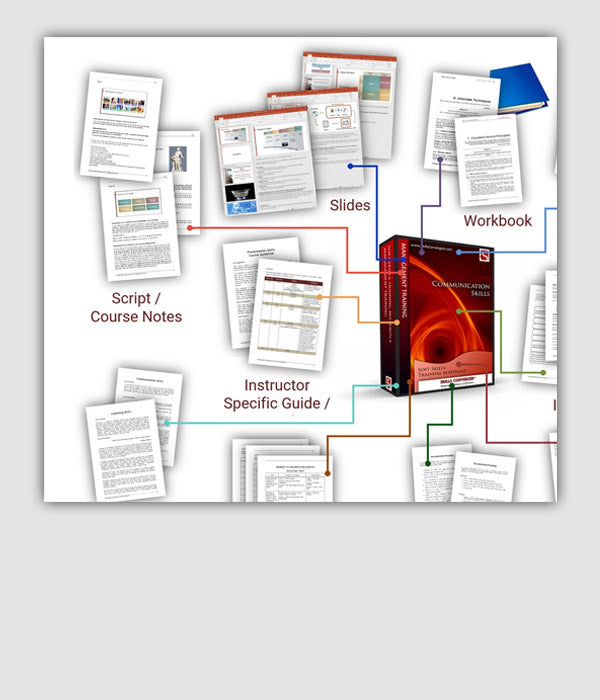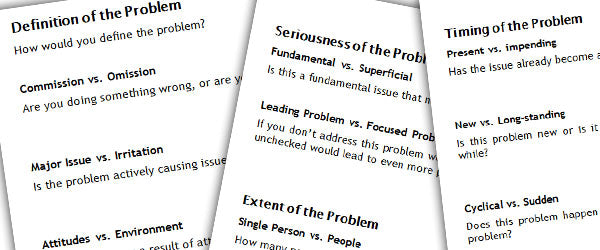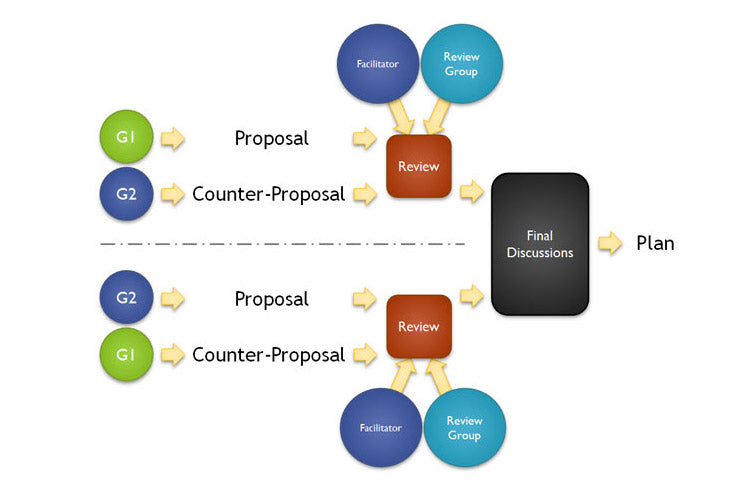Purpose
Most brainstorming sessions revolve around problem solving and coming up with new solutions. This is useful in generating ideas, though it does not provide many opportunities to find out what happens if certain actions are missed or if things go wrong.
This brainstorming technique helps groups to focus on evaluating the feasibility of solutions in practice. This is known as bullet proofing technique which is a form of negative brainstorming.
Objective
Use bullet proofing questions to test the feasibility of a particular solution or an area under consideration.
What You Need
Flipcharts or whiteboard.
Setup
- Ask the group to pick a particular problem for brainstorming. It should be a problem that everyone can contribute to.
- Ask the group to use classical brainstorming methods to generate a number of ideas or solutions.
- If many ideas are generated, ask people to choose top three ideas.
- Allow 10 minutes for this part.
- Now ask the group to apply the bullet proofing technique to these ideas. They need to answer the following questions for each of them:
- What can possibly go wrong?
- What are some of the difficulties that may occur as a result of following this solution?
- What is the worst imaginable result?
- The group can come up with other similar questions to continue with the discussions.
- Ask someone to keep a record of these ideas as they are discussed by the group.
- Allow 10 minutes for this phase.
- Create a table such as the example shown below (Bullet Proofing Example Form) on a flipchart or whiteboard. For each problem that was recorded, ask the group to identify if it is a “Major Problem” or a “Minor Problem”. Next, ask the group to identify the likelihood of its occurrence; “Unlikely, Likely, Very Likely”.
- Once all problems are covered, go through the table to fill the “status” column as follows:
- For those problems that are a “Major Problem” and are “Likely” write “Serious” under status.
- For those problems that are a “Major Problem” and are “Very Likely” write “Most Serious” under status.
- Allocate 10 minutes for generating the table.
- Now get the group to analyse the table for 10 minutes and generate a number of conclusions and actions to address the problems.
- Follow with a discussion on the usability of the bullet proofing technique.
Timing
Explaining the Exercise: 5 minutes
Activity: 10 min classic brainstorming + 10 min answering negative questions + 10 min generating table + 10 min discussing the results = 40 minutes
Group Feedback: 10 minutes
Discussion
After carrying out the first phase of the bullet proofing technique (answering negative questions), did you identify areas that you have not considered before? Did this technique help with the opening up of the brainstorming session? Did it lead to more interesting and useful ideas? How effective was the scoring table in prioritising the problems identified earlier? Did it help to focus your attention on major problems while identifying what minor problems can be left for time being?
To Tutor: This kind of brainstorming with strong emphasis on the negative side can sometimes demoralise the group. You may need to follow this with a positive brainstorming technique to lift the spirits and encourage positivity.
- What is the greatest result we can achieve?
- What is the biggest advantage of following up with this method?
- Where would we be in five years if all goes according to plan?
Bullet Proofing Example Form
|
Problem (Description)
|
Severity (“Major Problem” , “Minor Problem”)
|
Likelihood (“Unlikely”, “Likely”, “Very Likely”)
|
Status (“Serious”, “Most Serious”)
|
|
Problem A
|
Major Problem
|
Likely | Serious |
|
Problem B
|
Minor Problem
|
Likely | |
|
Problem C
|
Minor Problem
|
Unlikely | |
|
Problem D
|
Major Problem
|
Very Likely | Most Serious |
Soft Skills Training Materials
Get downloadable training materials
Online Train the Trainer Course:
Core Skills
Learn How to Become the Best Trainer in Your Field
All Tags
Training Resources for You

Course Design Strategy
Available as paperback and ebook

Free Training Resources
Download a free comprehensive training package including training guidelines, soft skills training activities, assessment forms and useful training resources that you can use to enhance your courses.

Our Comprehensive Guide to Body Language

Train the Trainer Resources
Get Insights - Read Guides and Books - Attend Courses
Training Materials
Get downloadable training materials on: Management Training, Personal Development, Interpersonal Development, Human Resources, and Sales & Marketing














Leave a comment
All comments are moderated before being published.
This site is protected by reCAPTCHA and the Google Privacy Policy and Terms of Service apply.